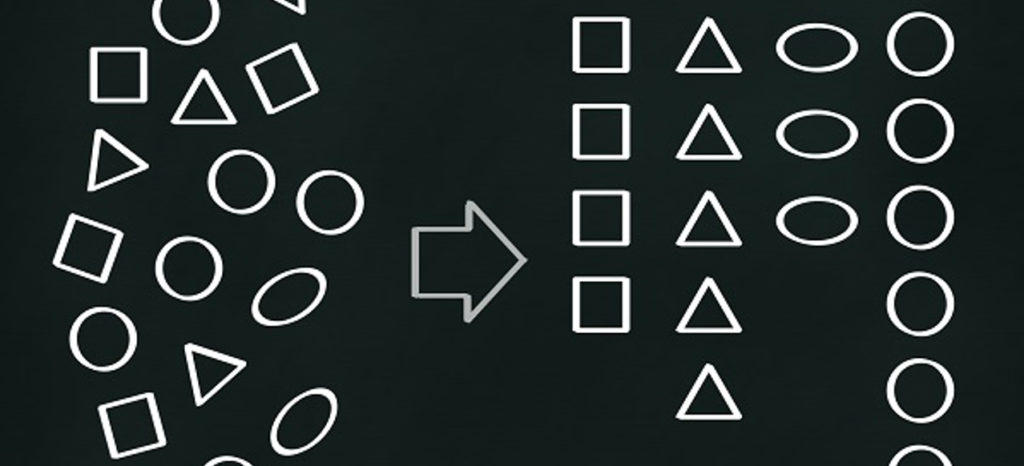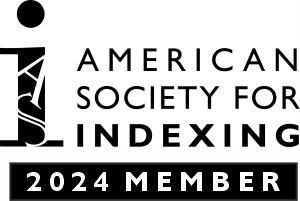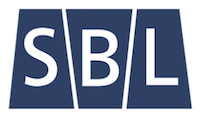
Welcome to Part 2 of our little overview of the book indexing process. If you missed part 1, check it out here. Especially if you are an author tasked to create an index for your nonfiction book, this little set of posts may be useful to smooth out the process. Of course, we’d love to read your book and make the index for you (we love indexing—I know, weird), but sometimes the funding just isn’t there for professional indexing. So, in the interest of promoting good indexing everywhere, more information about how to work this process of converting the essence of your text into a map of where all the important parts are located.
First, I’ll repeat a little bit from part 1 to refresh your memory on the structure.
Structure
Index entries are made up of three elements: main headings, subheadings, and locators (usually page numbers). Sometimes a cross-reference is used instead of a page number (e.g., “See also” or “See“) if there’s too much information on a topic or subtopic to fit it in one place or if more related information can be found elsewhere at another main heading.
Example of a regular entry with subentries:
assessment
essay questions, 41–48
multiple-choice questions, 34–40
timing of, 54–55
Examples of cross-references:
automobiles. See cars
formatting (see also alignment; styles)
action buttons, 30
backgrounds, 15–18, 26–27
charts, 12–15, 19
data in cells, 7–10
social studies curriculum, 59, 105–108. See also history
Refer to the Chicago Manual of Style for the different variations on style and layout. Cross-references can be put in different places in the entry and formatted in different ways, as you can see from the examples above. Pick a style and just be consistent with it. Note that the dash between page numbers in a range is not a simple hyphen, but an en dash. Look it up in your symbols list—there are keyboard shortcuts available for both Windows and Mac operating systems.
Process
OK. You can make your outline of the book now. But remember that that’s only the beginning, not the sum total of what an index is. Index users will be looking for both more general and more specific topics at the main heading level. Topics you may put in initially as subtopics for, say, a main topic that covers an entire chapter, will also need to be double-posted as main headings as well, with all the same page numbers. From one of the examples above, some users may look up “assessment” and find the subtopics underneath, but some users may be interested specifically in multiple-choice question formation; they are much more likely to look in the “m’s.” Be nice and give them both, like this:
assessment
essay questions, 41—48
multiple-choice questions, 34–40
timing of assessment, 54–55
Keywords and Aboutness
So, both general and more specific topics as main headings. That practice alone will dramatically improve your index. Keep in mind, though, that not all subtopic terms will make common-sense index search terms. The idea is to make the first term a keyword that says something substantive about the subject, so subtopics like “overview” would not make sense as main headings in an index. Common sense is really important here; ask yourself if you would use that term to look up something in a list or enter into a search engine.
Metatopics
Partly in order to save you some time, please don’t get stuck on making a duplicate of your index under the topic of the book itself. If your book is about birds, please avoid:
birds, 1–345
I kid you not, this sort of thing appears in indexes (perhaps tongue in cheek, but we don’t know). And you don’t need to give an outline of every chapter topic under the main book topic (although for how-to books, this might be useful). You will have to decide on the usefulness of a mini-outline under the book topic for yourself, but certainly don’t put all sorts of details there. Most of the time, the main book topic or topics will either not appear at all in the index, or will have just some very general things that wouldn’t go well as main headings for themselves. Here’s an example of a metatopic with very general stuff under it:
C++ programming language
Now, you could also just put:
C++ programming language, 1–11, 153
but for a technical topic like this one, the 1–11 range is a bit long to provide without further detail. More on longer page ranges next time. Hopefully, you get the idea. You can also cross-reference using See also to the next most specific topics from this book topic, unless you have more than about three of them. Please keep in mind that most index users will be using the index to find things that are not obvious from the table of contents or the title, so you don’t need to worry too much about providing super-general topics in the index. I usually start providing index topics at the chapter topic level (if the chapter is about only one thing) and then provide more detailed names, places, and subjects from there.
Next time, we’ll get into the subentry part and how to make them useful and easy to scan for your reader/index user.
You are very welcome to leave questions in the comments; I will keep an eye out and answer any that you submit.
_____________________________
As a courtesy, we’ve have taken this series of four posts and combined them into a PDF (A Brief Writer’s Guide to Book Indexing) that you can download to keep as a reference.
And if you are still overwhelmed by the indexing process and would like some pro help, we’re right here (info@potomacindexing.com).
(This series was originally published on the PI blog in 2014 and has been updated and edited for 2023)



Leave a Reply